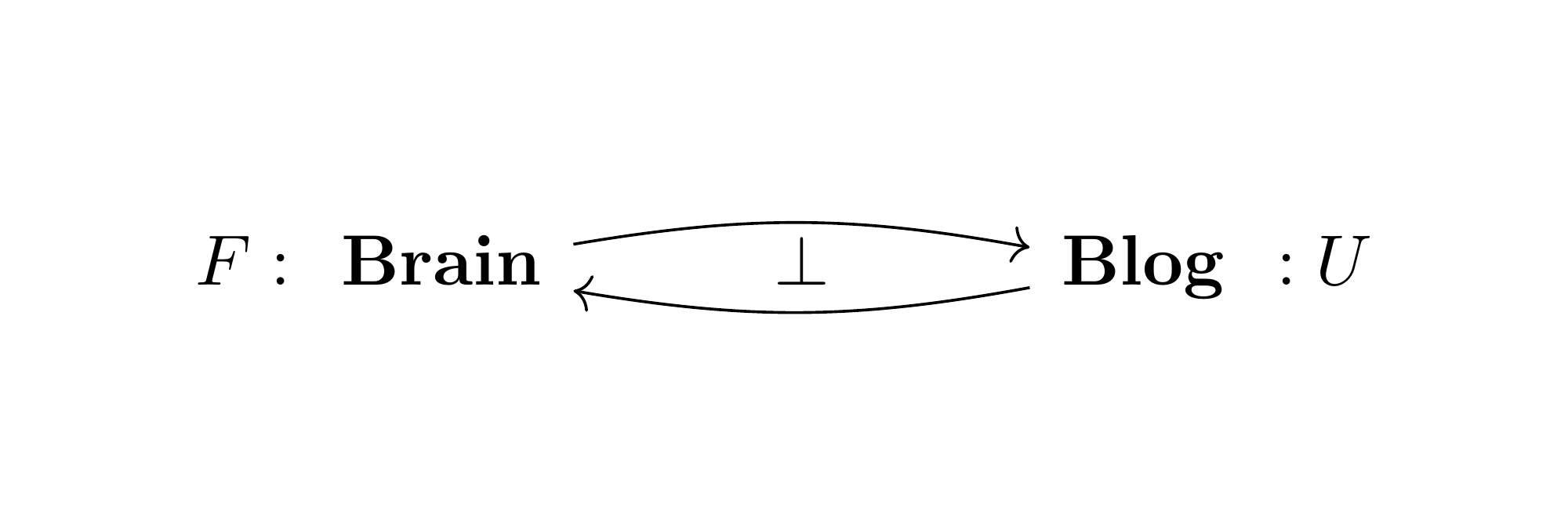I wanted to title this post with something more directly relevant to its topic, but so many things here are named after Grothendieck that I couldn’t help it. I swear, the only reason more people haven’t heard of him before is because he’s best known for maths that takes years to get to, but this man was an incredible mathematician (maybe check this out).
The plan today is to dissect sheaves a bit more. Precisely, I mean we’re going to be slicing (and dicing) categories of sheaves. Recall that sheaves are defined relative to some site , which is a category
equipped with a Grothendieck topology
. Any category equivalent to the category
of sheaves over some site is called a Grothendieck topos. So, the goal is to show that slices of Grothendieck topoi are again Grothendieck topoi. The key construction here is the aptly-named Grothendieck construction (well, actually we only need it in a special case where it is also called the category of elements, but no matter). This is an exercise in Mac Lane and Moerdijk’s book, so it should be easy, right?
Fix a Grothendieck topos , and let
be a sheaf over
. The slice
is the category of sheaves that lie over
, and we want to realise this as a category of sheaves also. The underlying category of our desired site
should then satisfy that presheaves
correspond to natural transformations to
. Let’s try to deduce
from this characterisation.
First, recall by the Yoneda Lemma that for , natural transformations
correspond to elements of
. This means every element
has to correspond to some presheaf
. As elements
are probably the “simplest” examples of natural transformations to
, they should probably correspond to the “simplest” presheaves; that is, the representable ones. Therefore, it’s probably not unreasonable to guess that the objects of
are given by the (generalised) elements of
. As for the morphisms of
, the Yoneda Lemma also gives us that these should be precisely the natural transformations between the corresponding representable presheaves. This means they correspond to natural transformations
that lie over
, and are thus (by Yoneda again) the morphisms
which send the chosen element of
to the chosen element of
. This is exactly the Grothendieck construction
(and probably explains why it’s called the “category of elements” of
in this case).
Definition 1. Given a (pseudo)functor from an ordinary category
to the 2-category of (small) categories, the Grothendieck construction produces the category
, where:
- the objects of
are pairs
where
and
- the morphisms
are given by morphisms
in
and
in
.
In particular, if (where we view sets as discrete categories), then the objects of
are pairs
with
, and the morphisms
are those
for which
.
This turns out to be exactly what we need. We get a canonical functor by sending a presheaf
to the presheaf
, which has a natural transformation
induced by sending
. In particular, note that the representable presheaf
has
, and so
(because
has to be some unique
). The induced projection
sends a morphism
to the element
, which (by the proof of the Yoneda Lemma) corresponds to the element
. Therefore,
sends
, as expected.
Intuitively, this functor bundles up the action of
on all of the elements of
according to its shape
. This suggests a natural inverse: if we view a presheaf
(i.e.,
lying over
) as a “bundle” over each element of
, then we should be able to extract each fibre to produce a presheaf over
. Indeed, this intuition defines the functor
that sends a presheaf
over
to the presheaf
. The functors
and
define an equivalence of categories, showing that the slices of a presheaf topos is again a presheaf topos.
Now we need only specialise this equivalence to sheaves if carries a topology
. Recall that if
is a sheaf, then covering sieves
induce bijections
. We want a topology on
such that
is a sheaf iff
produces a sheaf
over
. This means for every covering sieve
that natural transformations
correspond to elements of
. This suggests that natural transformations
should admit a canonical decomposition based on the elements of
.
This is why we need to be a sheaf. If
is a covering sieve, then any presheaf
induces for every natural transformation
a natural transformation
which corresponds to a unique
. This makes
lie over
, so write
for its corresponding presheaf over
. Then, we have just shown that every natural transformation
corresponds to a unique natural transformation
for some uniquely determined
. This defines a canonical bijection
. Therefore, define the Grothendieck topology on
by defining the covering sieves of
to be precisely these
for
a covering sieve in
, then
is a sheaf on
if and only if
is a sheaf on
.
Explicitly, is the subset of
on those
such that
, so this choice of covering makes intuitive sense as well. Indeed, we are saying that a sieve covers
if it is the fibre at
of a sieve in
that covers
. To summarise, we have proven the following:
Proposition 2. Let be a site, and
a sheaf. Then, the fibres of covering sieves in
defines a Grothendieck topology
on
such that we have an equivalence of categories
. In particular, the slice of a Grothendieck topos is another Grothendieck topos.
Note that we recover the statement for presheaves by taking to be the trivial topology.

2 thoughts on “Grothendieck this, Grothendieck that”